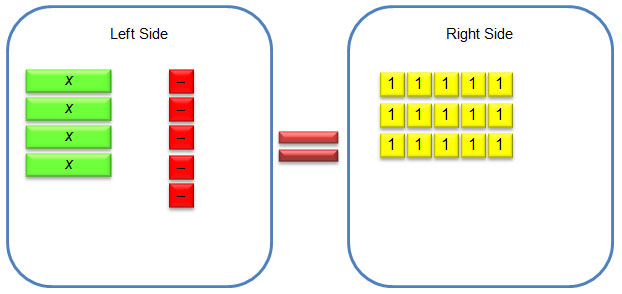
So far in this lesson, you have seen two models for solving equations: a balance scale and cups and counters. In this section, you will use and investigate a third model, algebra tiles.
For algebra tiles, a rectangle represents the variable, usually x, and squares are used to represent numbers.

Consider the equation 2x − 3 = 5. This equation can be modeled with algebra tiles using 2 green rectangles (positive x-tiles) and 3 red squares (negative unit tiles) on the left side of the equal sign and 5 yellow squares (positive unit tiles) on the right side.

![]() Watch this equation being solved using the algebra tile model.
Watch this equation being solved using the algebra tile model.
![]() On your own, use the interactive linked to the image below to set up and solve equations with algebra tiles.
On your own, use the interactive linked to the image below to set up and solve equations with algebra tiles.
How does the algebra tile model allow you to better visualize the concept of zero pairs?

How does the algebra tile model compare to the cups and counter model or the balance scale model?

For questions 1 – 3, use the algebra tile model to determine the value of x.


